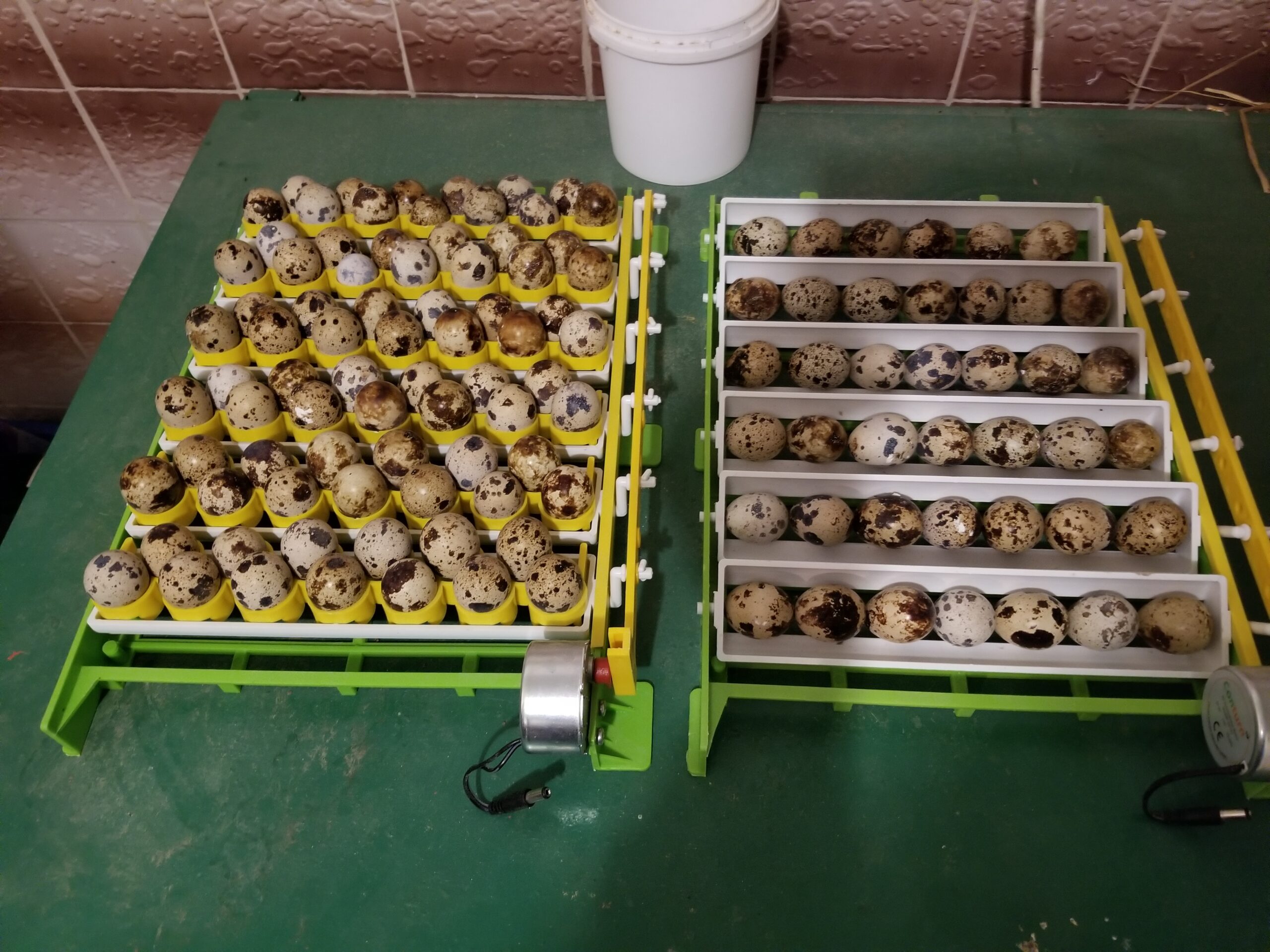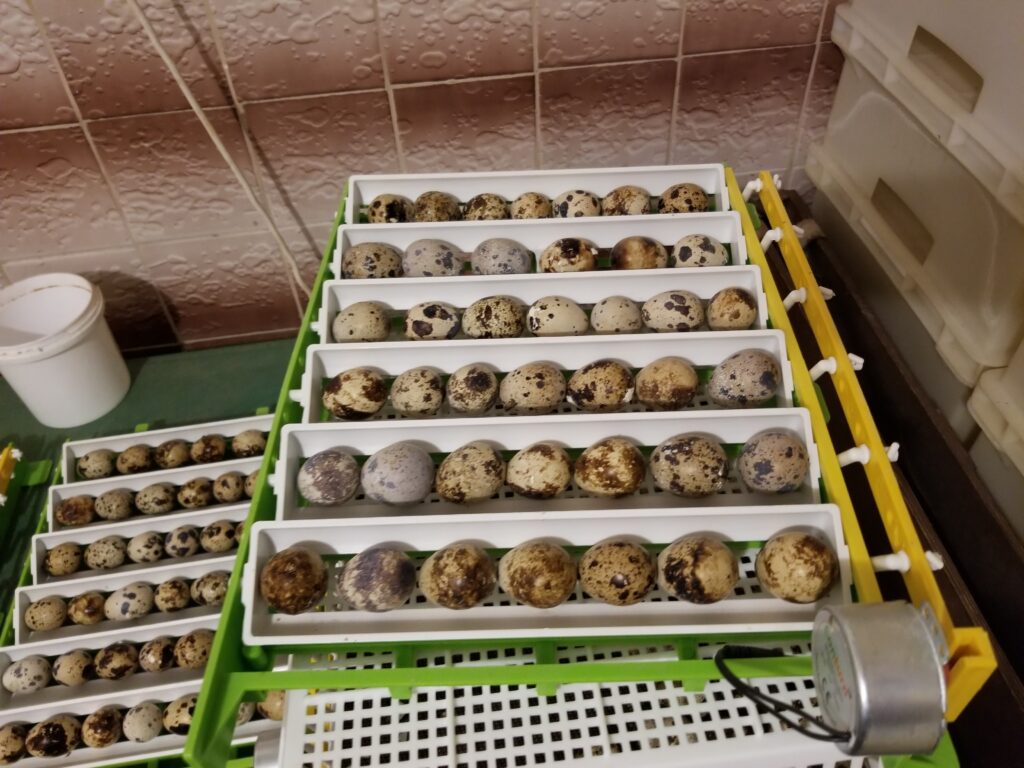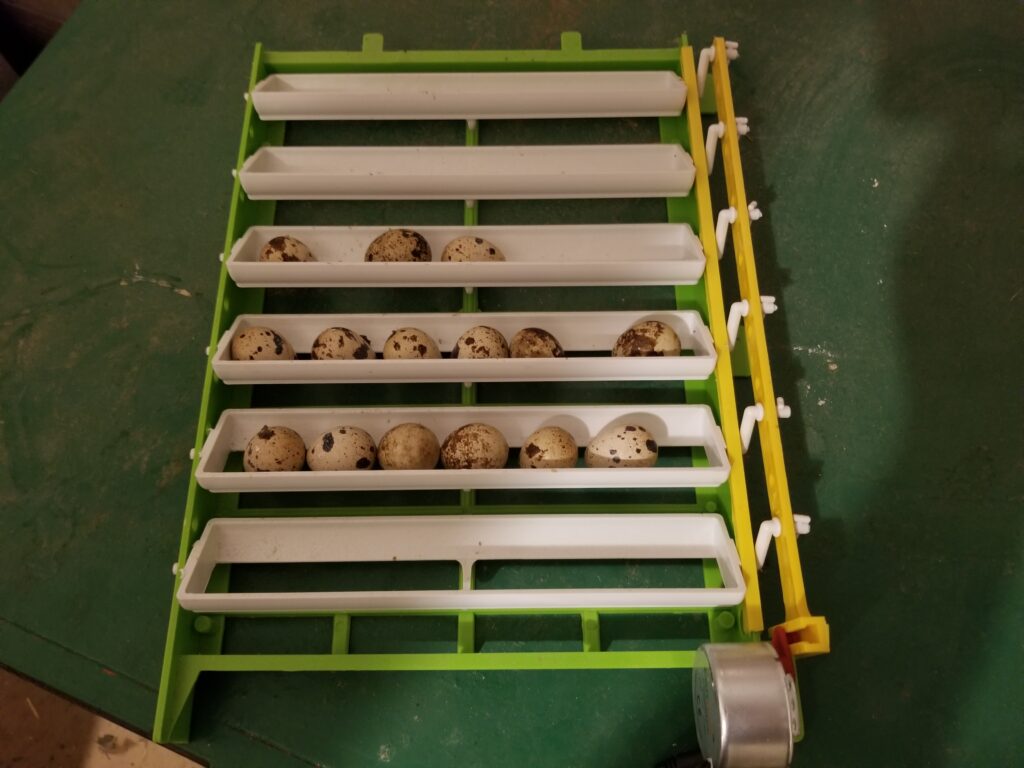Today marks a milestone that every breeding operation dreams of reaching: we’re incubating eggs from our own birds for the very first time. After months of buying fertile eggs from other breeders and relying on store-bought genetics, we’re finally ready to test whether our own breeding program can produce viable, hatchable eggs.
The nervousness is real.

Breaking New Ground
Up until now, our incubation experience has been built entirely on other people’s work. Store-bought eggs, eggs purchased from established breeders, genetics we had no hand in creating. Those hatches taught us the technical side of incubation—temperature control, humidity management, turning schedules—but they never truly tested whether we understood the breeding side of the equation.
Today’s incubator load is different. These eggs represent our breeding choices, our bird management, our understanding of genetics and pairing decisions. Success or failure will be a direct reflection of how well we’ve managed our breeding program from the ground up.
The Weight of Expectation
There’s something both exciting and terrifying about closing that incubator door on eggs from your own birds. With store-bought or breeder eggs, if the hatch fails, you can always blame the source, the shipping, the age of the eggs, or a dozen other factors outside your control.
But when the eggs came from your own coop, from birds you selected, fed, housed, and paired? Success becomes validation of everything you’ve been working toward. Failure becomes a learning opportunity that cuts a little deeper because there’s no one else to blame.

Let’s See What Happens
The honest truth is, we have no idea what to expect. Will anything hatch? Our breeding birds look healthy, they’re producing eggs regularly, and we’ve done our research on proper nutrition and breeding ratios. But until those first cracks appear in the shell, it’s all theoretical.
This incubator load is as much an experiment as it is a step toward self-sufficiency. We’re testing our breeding stock, our management practices, and our understanding of what it takes to produce fertile, viable eggs. The next 17 days will tell us whether we’re on the right track or if we need to make significant changes to our approach.
A Leap of Faith
Every successful breeding program starts with this moment—the leap of faith when you trust your own birds instead of relying on someone else’s proven genetics. It’s both humbling and empowering to realize that we’ve reached the point where this experiment is even possible.
We’ve moved from consumers of other people’s breeding programs to producers of our own genetic lines. Whether this first attempt succeeds spectacularly or teaches us hard lessons, it represents progress toward the kind of farm independence that makes all the work worthwhile.

The Learning Curve Continues
Regardless of what happens with this hatch, we’re learning. Even if we get zero viable chicks, we’ll learn something about our breeding management, our egg handling, or our incubation technique. Success will validate our approach; failure will redirect our efforts toward improvement.
The beautiful thing about farming is that there’s always another season, another attempt, another chance to get it right. This first batch of our own eggs is just the beginning of what we hope will become a long, successful journey toward complete breeding independence.
The waiting game begins. Seventeen days from now, we’ll know whether our breeding program is ready for prime time.
Have you ever hatched eggs from your own breeding birds? Share your first-time experiences—the successes, failures, and lessons learned. We’d love to hear your stories while we nervously wait for our results!
What was your biggest surprise when you first started breeding your own birds? Drop your experiences in the comments below!